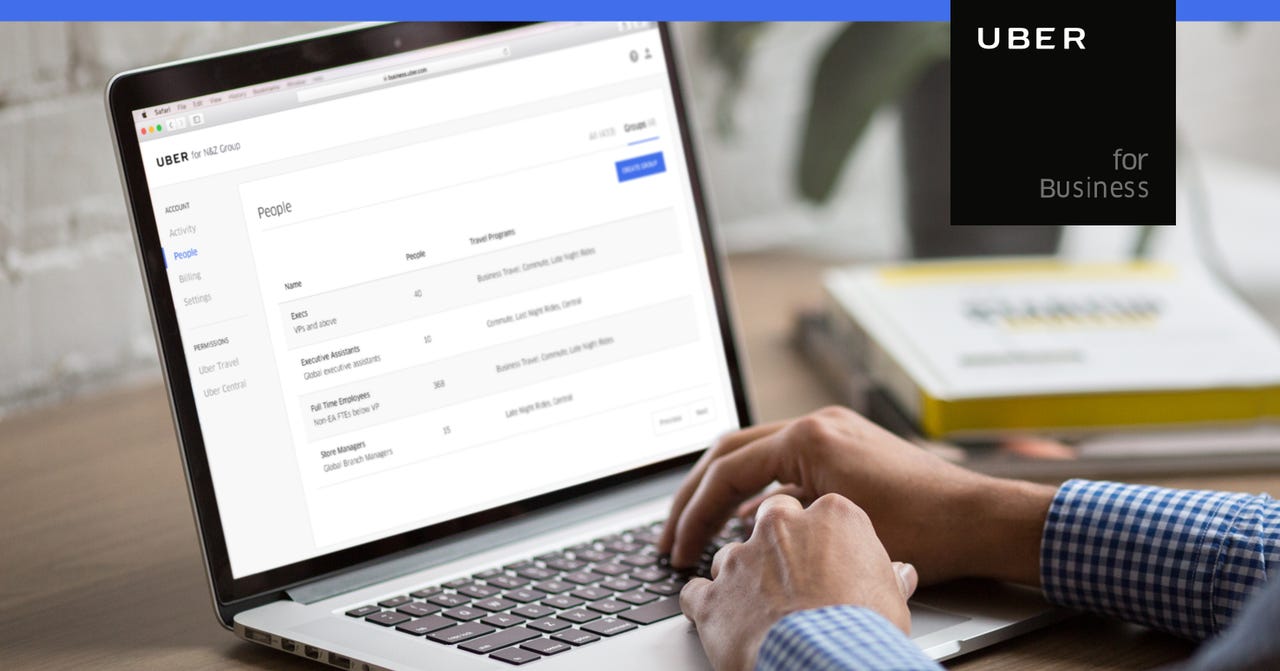Amid controversies, Uber steadily grows its enterprise business


Uber has been plagued for months by a string of explosive controversies, but its enterprise-facing business is still growing, the company says. On Tuesday, the transportation company is introducing a revamped version of Uber for Business, giving business customers a whole new set of capabilities to work with.
Read more
Uber for Business launched three years ago as a platform for businesses to manage their employees' ground transportation needs. The new tools are a "significant leap forward" for Uber's business customers, said Julie Herendeen, head of marketing and strategy for Uber for Business.
The revamped platform gives companies new ways to control how employees use corporate Uber accounts, as well as tools to set up automated programs for specific use cases like office-to-office travel and last-mile rides to public transit. It also comes with a redesigned user interface.
While most people know Uber for its core ride-hailing app, Uber has several lines of business. Uber for Business sits within the "Uber Everything" category of the transportation company, along with Uber Eats. Uber for Business has won over a large share of business travel with 65,000 customers. In just the last six months of this year, revenue on the platform has tripled, Herendeen said, calling it "a testament to the usage and adoption we're seeing from our customers."
The revamped platform enables several capabilities that Uber's business customers were requesting, or trying to implement manually. That includes parameters for employee usage, which companies requested, such as the type of car an employee can request, how much money they can spend on a ride, the times of day they can take a trip or the location from which a trip needs to begin or end.
Meanwhile, managers can set up travel programs for use cases tailored to their needs. For instance, a manager could create a "late-night ride" policy to allow workers to take an Uber home if they'd stayed at the office past a certain hour. Last-mile ride policies could help businesses aiming to ease workers' commutes, said Greg Greiner, head of product at Uber for Business.
"If you're a company that's over a mile from public transportation, it can be a struggle both retaining and recruiting new talent because it can be difficult to get people into work," he said. "By adding a really simple last-mile ride program, you can actually allow employees to charge a small portion of their commutes back to the business and make a large impact on their overall commuting experience."
The updated platform also enables managers to provide different levels of access and services to different groups. For instance, all employees could receive $10 for their daily commute, but recruiters could be granted access to call extra rides prospective employees.
Add to that the new user interface, and this amounts to the first time Uber for Business has been rebuilt "from the bottom up," Greiner said. The new features roll out Tuesday and are included in regular pricing for Uber for Business.
The business segment has managed to grow its sales in spite of a stream of negative headlines about Uber, running the gamut from battles with lawmakers to charges that the company promotes a toxic and sexist corporate culture. This month alone has been explosive: Earlier this month, a report emerged that Uber knowingly leased potentially dangerous vehicles to its drivers. Meanwhile, Benchmark Capital, one of the company's major investors, is suing its former CEO Travis Kalanick.
Just yesterday, Benchmark sent a letter to Uber employees explaining its suit and outlining a number of its grievances, such as the fact that Uber has been without an official CFO since 2015.
The overwhelming majority of business travelers still use Uber for ride hailing, according to data from Certify, though Lyft has steadily increased its share of the market this year. Herendeen said the controversies haven't impacted Uber for Business, suggesting that Uber and its competitors are benefiting from a growing market of business travelers using ride sharing.
"Probably the parts of the business that are seeing an impact from [the controversies] are more car rentals and taxis," she said, "but we've continued to see tremendous growth in businesses' usage of Uber for Business."
PREVIOUS AND RELATED COVERAGE
Why GE's use of Google Glass marks a turning point for AR
By exploiting the new enterprise edition of Google Glass and AR software from Upskill, GE Aviation shows how AR is changing the factory floor.
IBM Research achieves new milestone in deep learning performance
New distributed deep learning software from IBM Research achieves record performance for a large neural network trained on large data set.
Uber Freight expands to new regions across the US
The trucking app now covers more than a quarter of the country's drivers and freight.